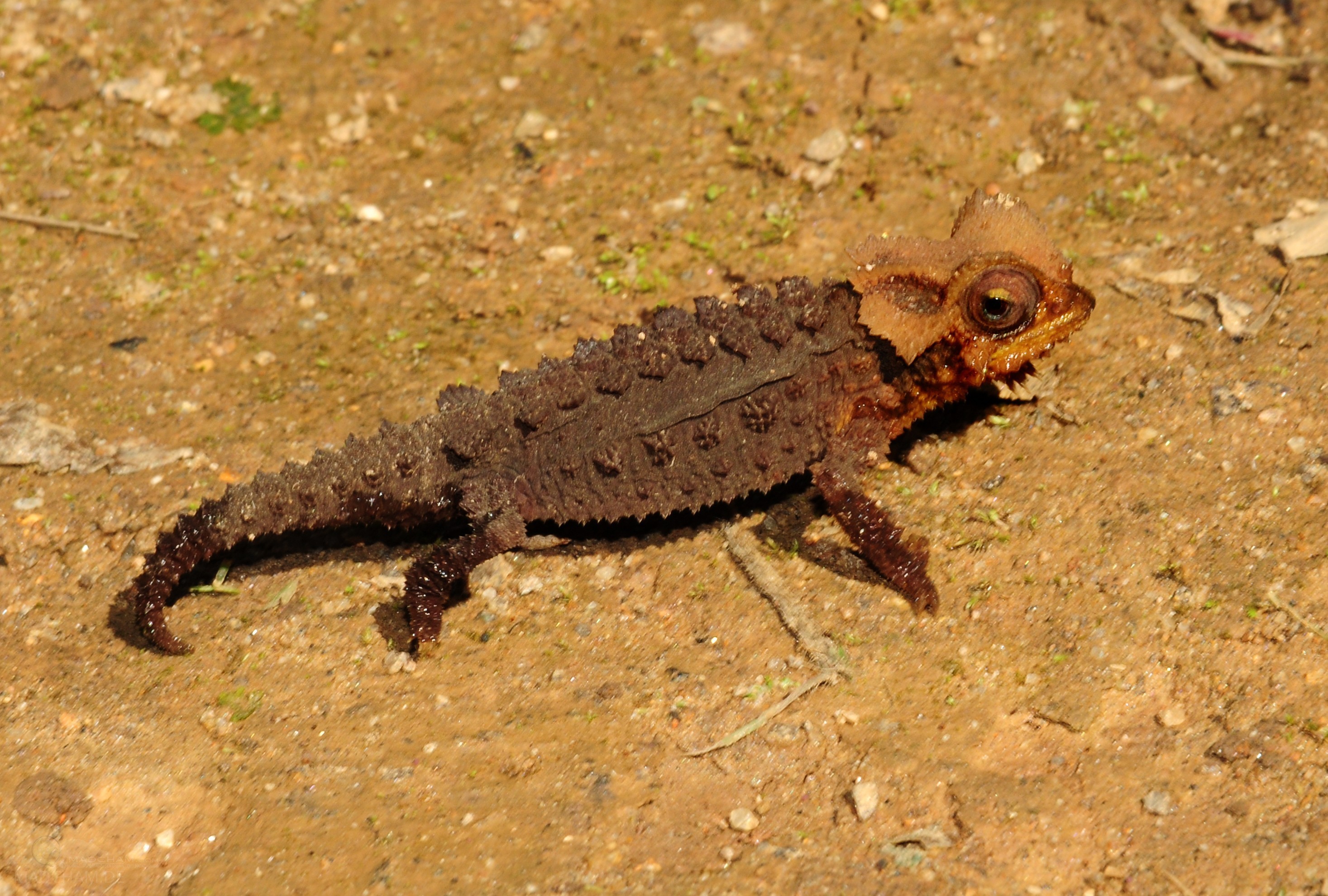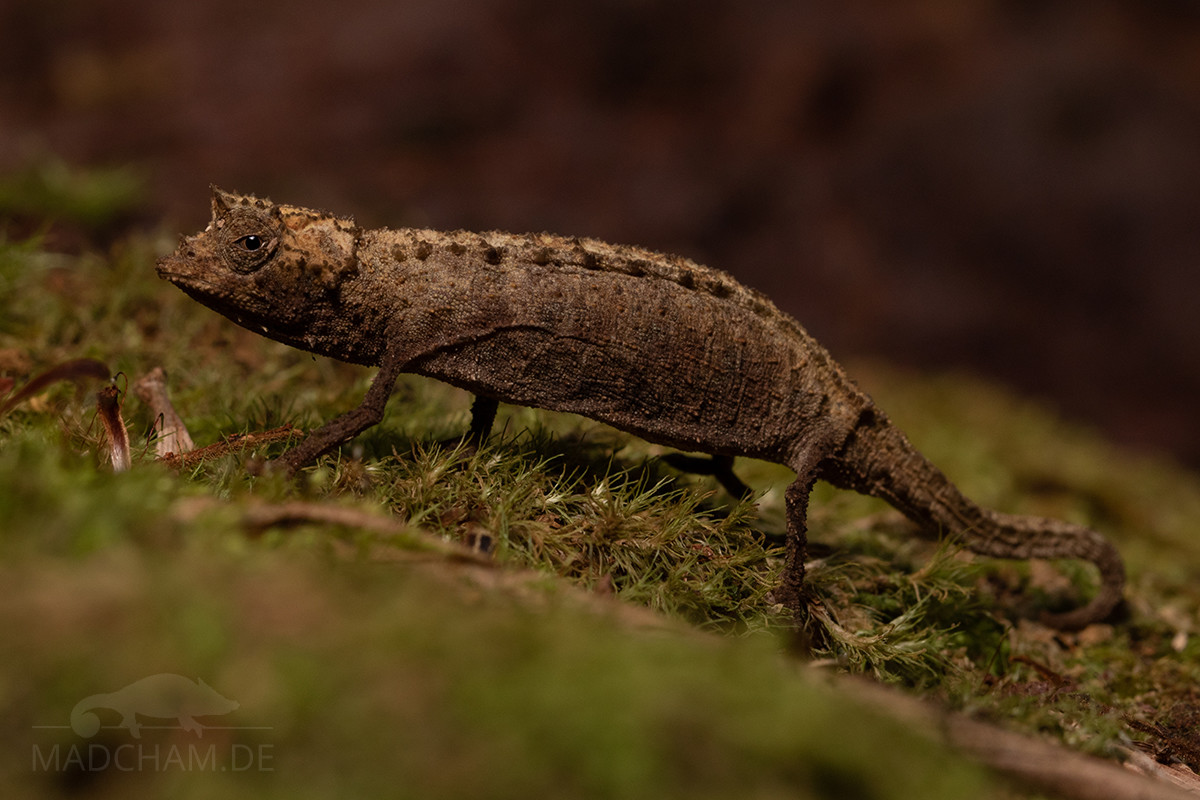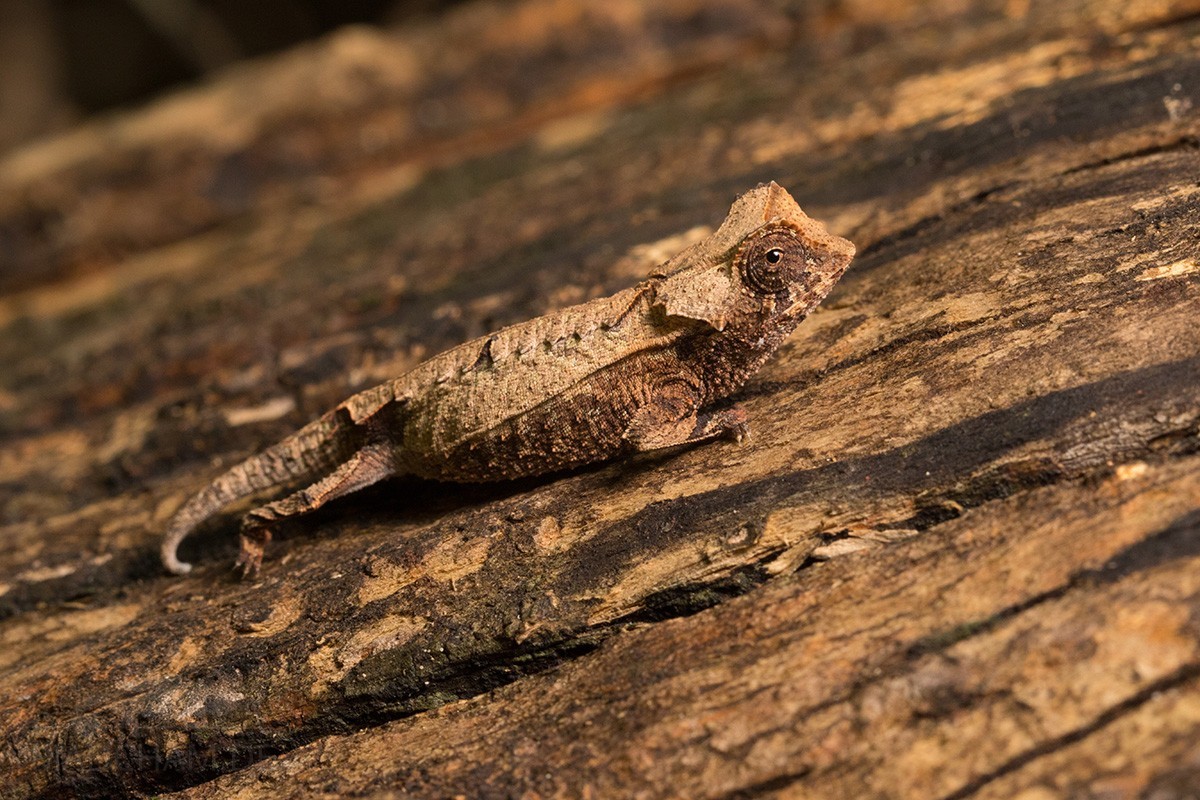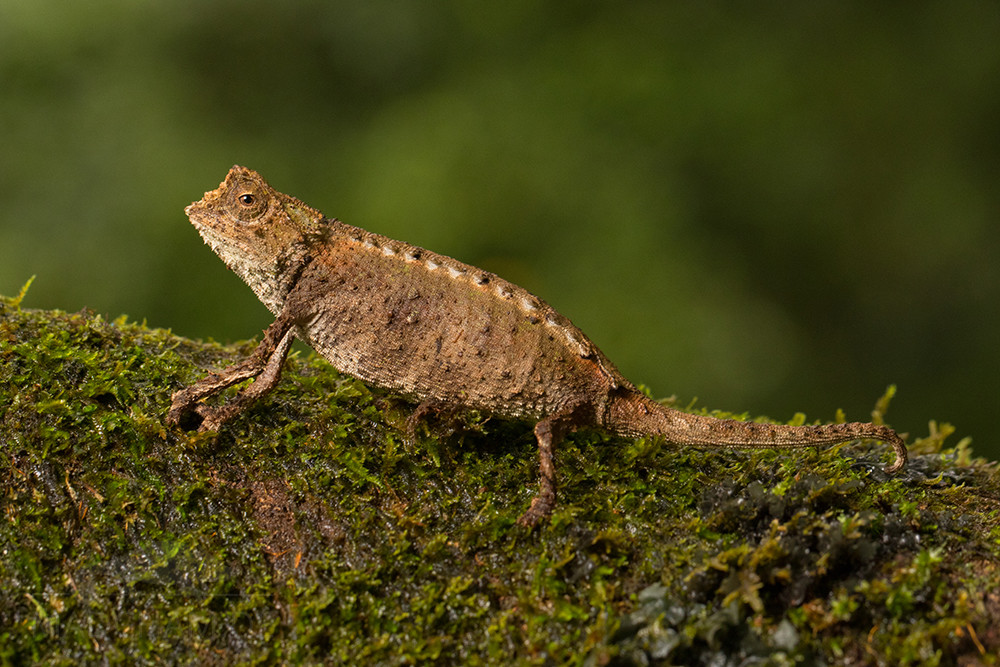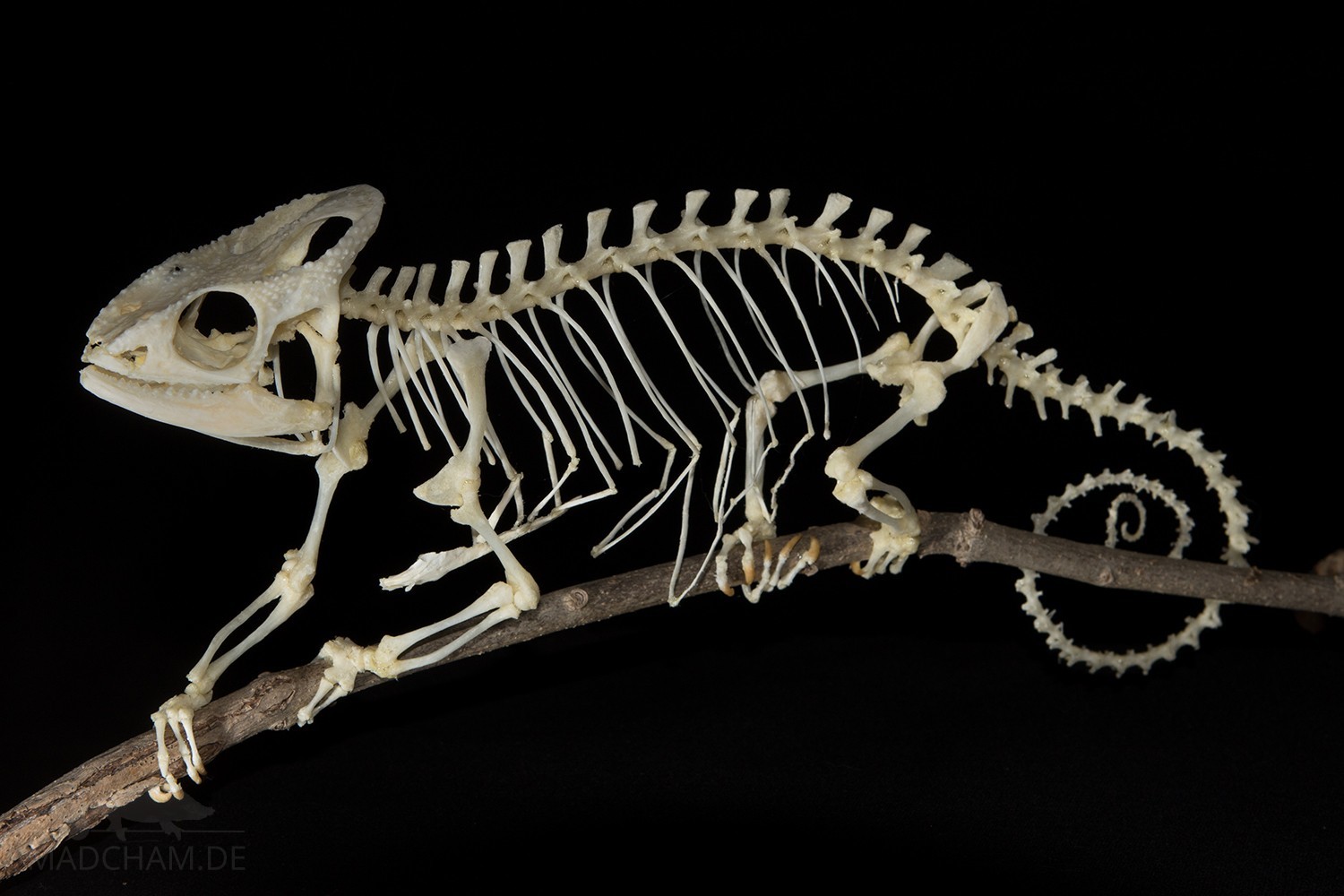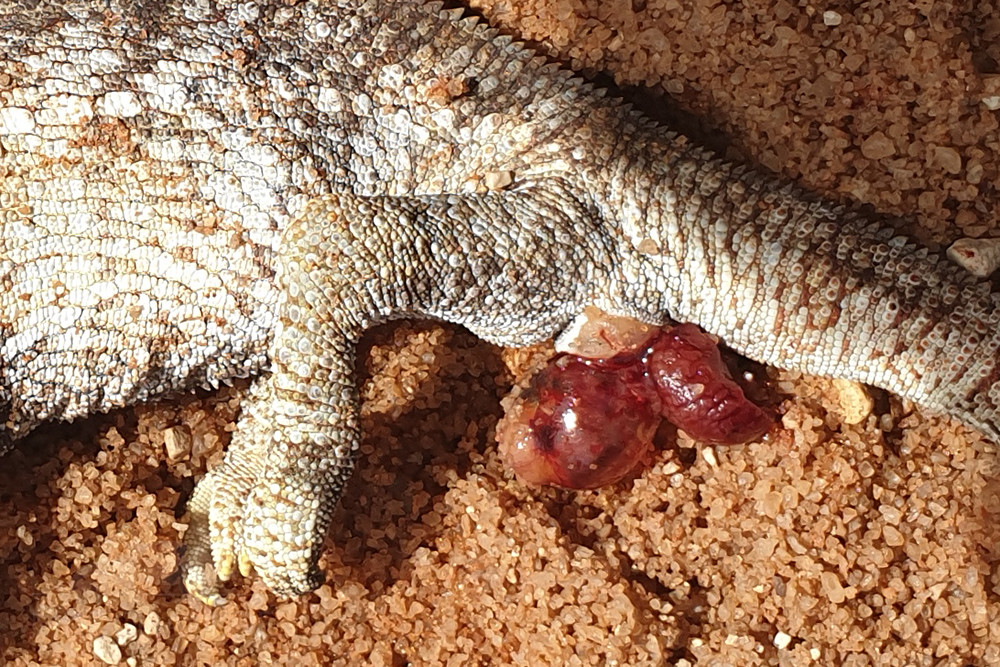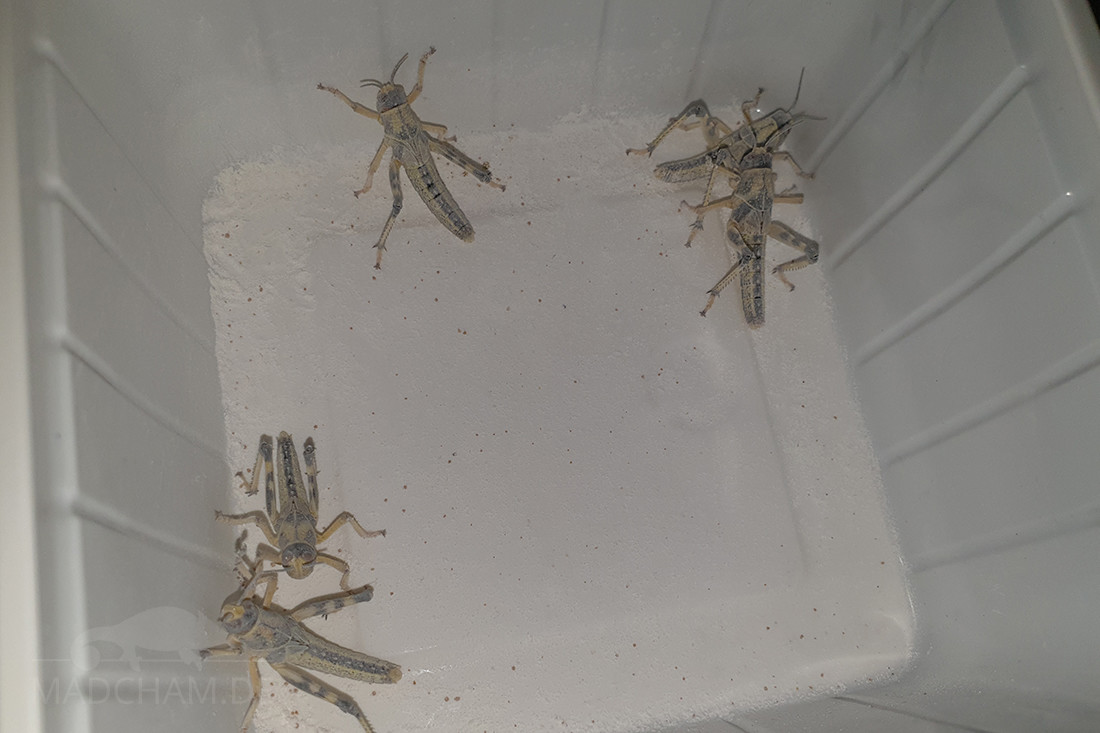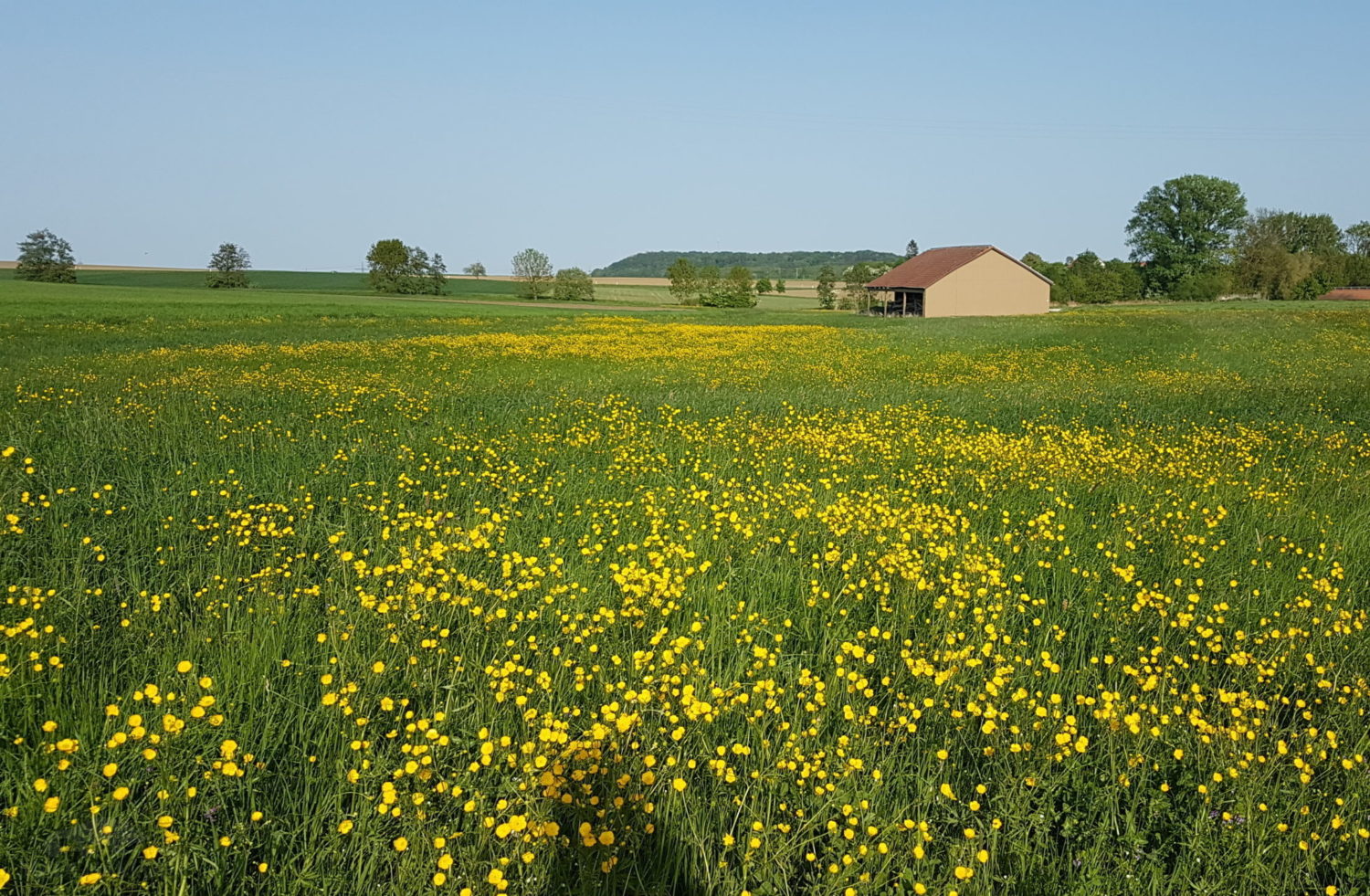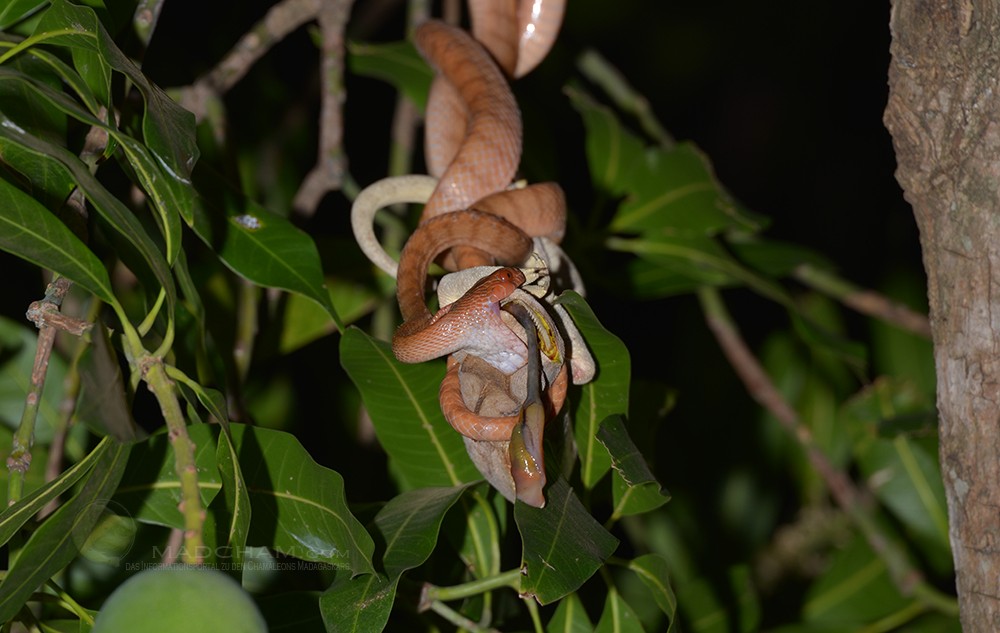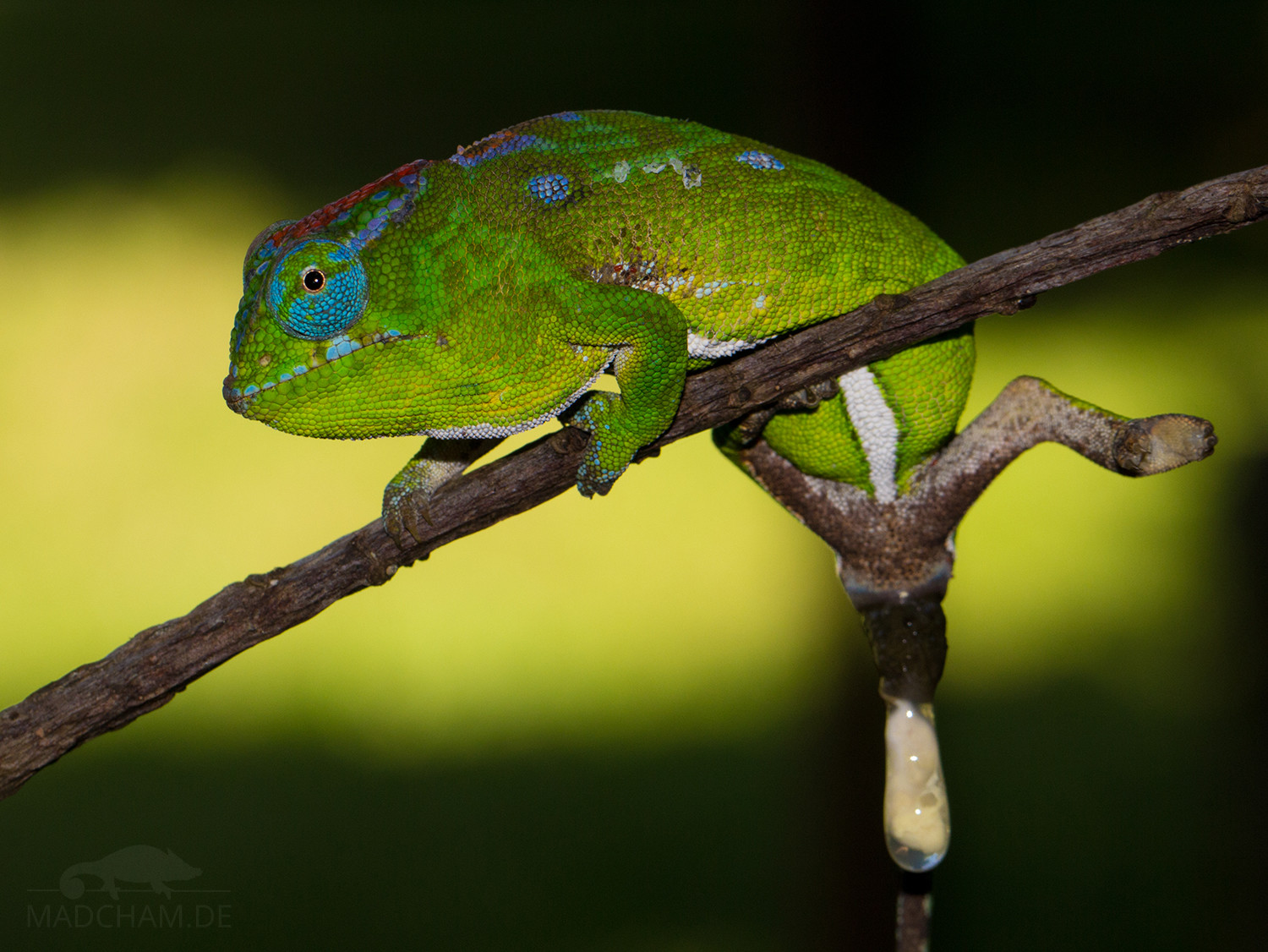Brookesia perarmata
First description: (Angel, 1933) Origin of the species name: Fernand Angel described this chameleon species in his function as an assistant taxidermist using a prepared animal that was kept in the Natural History Museum...
Brookesia karchei
First description: Brygoo, Blanc & Domergue, 1970 Origin of the species name: Édouard-Raoul Brygoo (later working at the Natural History Museum in Paris, France), Charles Pierre Blanc and Charles Antoine Domergue from the then...
Brookesia decaryi
First description: Angel, 1939 Origin of the species name: Fernand Angel described this chameleon species on the basis of prepared animals that were kept in the Natural History Museum of Paris (France). The chameleons...
Brookesia antakarana
First description: Raxworthy & Nussbaum, 1995 Origin of the species name: Christopher J. Raxworthy from the American Museum of Natural History, New York (USA), and Ronald A. Nussbaum from the University of Michigan, Ann...
Anatomy
Anatomy means as much as the study of the structure of the body. This site is dedicated to the anatomy of Madagascan chameleons, and it is certainly not complete. We expand the article piece...
Cloacal prolapse
Chameleons may sometimes have tissue hanging out the cloaca which they cannot pull back. The medicinal term for this is prolapse. No matter which tissue is affected, a cloacal prolapse is always an urgent...
Supplementation
Supplementation or supplementation in terraristics means that a feeder is dusted (powdered) with vitamin or calcium powder before feeding it to a chameleon. The intention is that a given amount of vitamins and calcium...
Catch your own feeders
During sommer, meadows offer a rich meal for chameleons – you just have to harvest it. Feeders from the meadows have no need for gutloading and offer a wide variety. From time to time,...
Cohabitation
Chameleons among each other Most chameleons, e.g. Furcifer pardalis, can only be kept individually, as they are very aggressive within the species. Pairings are often only possible for the duration of the pairing itself....
Feces and urates
Feces and urates In contrast to humans, dogs, cats, and other mammals, chameleons do not release liquid urine. Instead, they produce so-called urate, which consists of the salts of uric acid. Urat is a...

